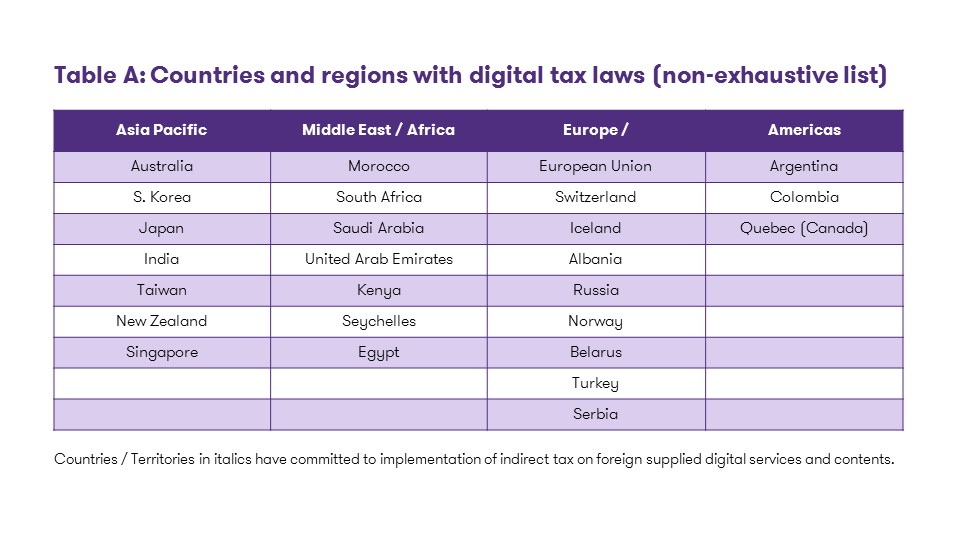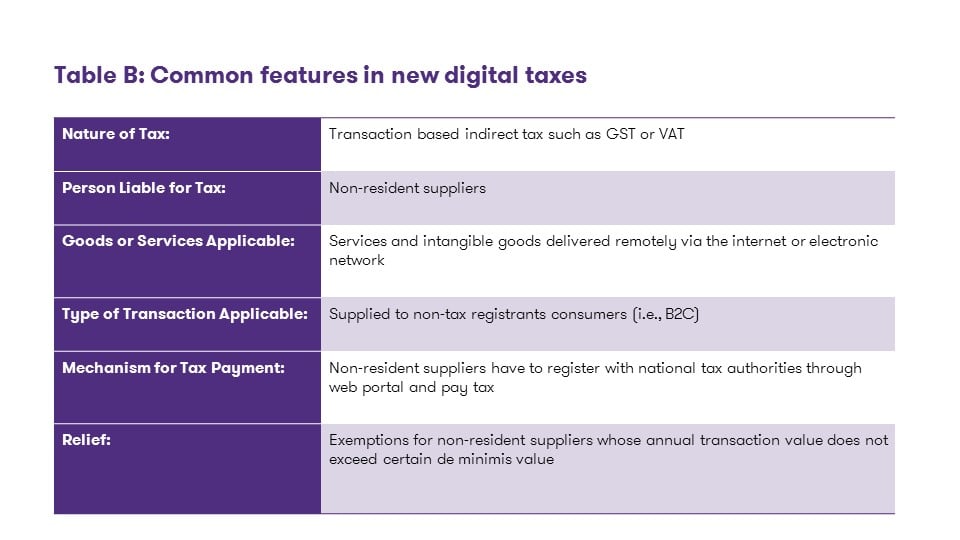-
Internal audit
In today's increasingly competitive and regulated market place, organisations - both public and private - must demonstrate that they have adequate controls and safeguards in place. The availability of qualified internal audit resources is a common challenge for many organisations.
-
IFRS
At Grant Thornton, our International Financial Reporting Standards (IFRS) advisers can help you navigate the complexity of financial reporting so you can focus your time and effort on running your business.
-
Audit quality monitoring
Having a robust process of quality control is one of the most effective ways to guarantee we deliver high-quality services to our clients.
-
Global audit technology
We apply our global audit methodology through an integrated set of software tools known as the Voyager suite.
-
Looking for permanent staff
Grant Thornton's executive recruitment is the real executive search and headhunting firms in Thailand.
-
Looking for interim executives
Interim executives are fixed-term-contract employees. Grant Thornton's specialist Executive Recruitment team can help you meet your interim executive needs
-
Looking for permanent or interim job
You may be in another job already but are willing to consider a career move should the right position at the right company become available. Or you may not be working at the moment and would like to hear from us when a relevant job comes up.
-
Practice areas
We provide retained recruitment services to multinational, Thai and Japanese organisations that are looking to fill management positions and senior level roles in Thailand.
-
Submit your resume
Executive recruitment portal
-
Update your resume
Executive recruitment portal
-
Available positions
Available positions for executive recruitment portal
-
General intelligence assessments
The Applied Reasoning Test (ART) is a general intelligence assessment that enables you to assess the level of verbal, numerical reasoning and problem solving capabilities of job candidates in a reliable and job-related manner.
-
Candidate background checks
We provide background checks and employee screening services to help our clients keep their organisation safe and profitable by protecting against the numerous pitfalls caused by unqualified, unethical, dangerous or criminal employees.

-
Capital markets
If you’re buying or selling financial securities, you want corporate finance specialists experienced in international capital markets on your side.
-
Corporate simplification
Corporate simplification
-
Expert witness
Expert witness
-
Family office services
Family office services
-
Financial models
Financial models
-
Forensic Advisory
Investigations
-
Independent business review
Does your company need a health check? Grant Thornton’s expert team can help you get to the heart of your issues to drive sustainable growth.
-
Mergers & acquisitions
Mergers & acquisitions
-
Operational advisory
Grant Thornton’s operational advisory specialists can help you realise your full potential for growth.
-
Raising finance
Raising finance
-
Restructuring & Reorganisation
Grant Thornton can help with financial restructuring and turnaround projects, including managing stakeholders and developing platforms for growth.
-
Risk management
Risk management
-
Transaction advisory
Transaction advisory
-
Valuations
Valuations
-
Human Capital Consulting
From time to time, companies find themselves looking for temporary accounting resources. Often this is because of staff leaving, pressures at month-end and quarter-end, or specific short-term projects the company is undertaking.
-
Strategy & Business Model
Strategy & Business Model
-
Process Optimisation & Finance Transformation
Process Optimisation & Finance Transformation
-
System & Technology
System & Technology
-
Digital Transformation
Digital Transformation
-
International tax
With experts working in more than 130 countries, Grant Thornton can help you navigate complex tax laws across multiple jurisdictions.
-
Licensing and incentives application services
Licensing and incentives application services
-
Transfer pricing
If your company operates in more than one country, transfer pricing affects you. Grant Thornton’s experts can help you manage this complex and critical area.
-
Global mobility services
Employing foreign people in Australia, or sending Australian people offshore, both add complexity to your tax obligations and benefits – and we can guide you through them.
-
Tax compliance and tax due diligence review services
Tax compliance
-
Value-Added Tax
Value-Added Tax
-
Customs and Trade
Customs and Trade
-
Service Line
グラントソントン・タイランド サービスライン
-
Business Process Outsourcing
Companies, large and small, need to focus on core activities. Still, non-core activities are important, and they need to be leaner and more efficient than most companies can make them sustainably. For Grant Thornton, your non-core activities are our core business. Grant Thornton’s experienced outsourcing team helps companies ensure resilience, improve performance, manage costs, and enhance agility in resourcing and skills. Who better to do this than an organisation with 73,000 accountants? At Grant Thornton we recognise that that outsourcing your F&A functions is a strategic decision and an extension of your brand. This means we take your business as seriously as we take our own.
-
Technology and Robotics
We provide practical digital transformation solutions anchored in business issues and opportunities. Our approach is not from technology but from business. We are particularly adept at assessing and implementing fast and iterative digital interventions which can drive high value in low complex environments. Using digital solutions, we help clients create new business value, drive efficiencies in existing processes and prepare for strategic events like mergers. We implement solutions to refresh value and create sustainable change. Our solutions help clients drive better and more insightful decisions through analytics, automate processes and make the most of artificial intelligence and machine learning. Wherever possible we will leverage your existing technologies as our interest is in solving your business problems – not in selling you more software and hardware.
-
Technical Accounting Solutions
The finance function is an essential part of the organisation and chief financial officer (CFO) being the leader has the responsibility to ensure financial discipline, compliance, and internal controls. As the finance function is critical in every phase of a company’s growth, the CFO role also demands attention in defining business strategy, mitigating risks, and mentoring the leadership. We offer technical accounting services to finance leaders to help them navigate complex financial and regulatory environments, such as financial reporting and accounting standards, managing compliance requirements, and event-based accounting such as dissolutions, mergers and acquisitions.
-
Accounting Services
Whether you are a local Thai company or a multinational company with a branch or head office in Thailand you are obliged to keep accounts and arrange for a qualified bookkeeper to keep and prepare accounts in accordance with accounting standards. This can be time consuming and even a little dauting making sure you conform with all the regulatory requirements in Thailand and using Thai language. We offer you complete peace of mind by looking after all your statutory accounting requirements. You will have a single point of contact to work with in our team who will be responsible for your accounts – no matter small or large. We also have one of the largest teams of Xero Certified Advisors in Thailand ensuring your accounts are maintained in a cloud-based system that you have access to too.
-
Staff Augmentation
We offer Staff Augmentation services where our staff, under the direction and supervision of the company’s officers, perform accounting and accounting-related work.
-
Payroll Services
More and more companies are beginning to realize the benefits of outsourcing their noncore activities, and the first to be outsourced is usually the payroll function. Payroll is easy to carve out from the rest of the business since it is usually independent of the other activities or functions within the Accounting Department. At Grant Thornton employees can gain access to their salary information and statutory filings through a specialised App on their phone. This cuts down dramatically on requests to HR for information by the employees and increases employee satisfaction. We also have an optional leave approval app too if required.
-
 IBR Optimism of Thailand Mid-Market Leaders Suggests Potential Underestimation of Challenges Ahead: International Business Report, Q1 2024Bangkok, Thailand, April 2024 — The Grant Thornton International Business Report (IBR) for Q1 2024 unveils a strikingly optimistic outlook among Thailand's mid-market business leaders, juxtaposed with the looming challenges that will shape the nation's economic future. With a Business Health Index score of 13.5, Thailand outperforms its ASEAN, Asia-Pacific, and global counterparts, signaling a robust confidence that may overshadow critical issues such as demographic changes, skills shortages, and the necessity for digital advancement.
IBR Optimism of Thailand Mid-Market Leaders Suggests Potential Underestimation of Challenges Ahead: International Business Report, Q1 2024Bangkok, Thailand, April 2024 — The Grant Thornton International Business Report (IBR) for Q1 2024 unveils a strikingly optimistic outlook among Thailand's mid-market business leaders, juxtaposed with the looming challenges that will shape the nation's economic future. With a Business Health Index score of 13.5, Thailand outperforms its ASEAN, Asia-Pacific, and global counterparts, signaling a robust confidence that may overshadow critical issues such as demographic changes, skills shortages, and the necessity for digital advancement. -
 Workshop Corporate Strategy and Company Health Check WorkshopThroughout this workshop, we will delve into the life cycle of companies, examining the stages of growth, maturity, and adaptation. Our focus will extend to the current business environment, where your Company stands today, and how our evolving strategy aligns with the ever-changing market dynamics.
Workshop Corporate Strategy and Company Health Check WorkshopThroughout this workshop, we will delve into the life cycle of companies, examining the stages of growth, maturity, and adaptation. Our focus will extend to the current business environment, where your Company stands today, and how our evolving strategy aligns with the ever-changing market dynamics. -
 Tax and Legal update 1/2024 Introducing the New “Easy E-Receipt” Tax scheme with up to THB 50,000 in Tax DeductionsThe Revenue Department has introduced the latest tax scheme, the “Easy E-Receipt”, formerly known as “Shop Dee Mee Kuen”. This scheme is designed to offer individuals tax deductions in 2024.
Tax and Legal update 1/2024 Introducing the New “Easy E-Receipt” Tax scheme with up to THB 50,000 in Tax DeductionsThe Revenue Department has introduced the latest tax scheme, the “Easy E-Receipt”, formerly known as “Shop Dee Mee Kuen”. This scheme is designed to offer individuals tax deductions in 2024. -
 TAX AND LEGAL Complying with the PDPA – A Balancing ActOrganisations must be aware of the circumstances in which they are allowed to collect data to comply with Thailand’s Personal Data Protection Act.
TAX AND LEGAL Complying with the PDPA – A Balancing ActOrganisations must be aware of the circumstances in which they are allowed to collect data to comply with Thailand’s Personal Data Protection Act.
Since its inception, the digital realm has been an economic “wild west.” Laws and regulations written in the “brick and mortar” world often do not apply or are, for all practical purposes, unenforceable in the digital counterpart. Just as regulators attempt to catch up by creating new laws and enforcement mechanisms, the digital realm moves the frontier out even further – creating new turf that is free from governance.
Tax is no different.
For years, tax authorities have been attempting to extend their tax net into the digital realm. In recent years it seems that tax collectors have been gaining ground. In part one of this article, we looked at Thailand’s proposal to tax the digital economy through a destination-based value added tax (VAT) system. The draft tax law, when enacted, will have Thailand imposing VAT on foreign supplied digital content and services. In this article, we explore the global trends and developments on digital tax laws. We will also discuss the impact on businesses from this emerging digital tax landscape.
The start of the decade saw the first wave of transaction-based taxes imposed on the digital economy. Northern European countries such as Norway, Switzerland, and Iceland were early adopters. In 2011, Norway imposed VAT on foreign suppliers of digital contents and services to Norwegian consumers.[1] Asia Pacific countries followed suit with major economies such as Japan, South Korea, India, Australia, New Zealand and Taiwan implementing similar taxes between 2015 and 2018. Singapore confirmed that it will start imposing GST on foreign supplied digital content and services in 2020.[2] Other countries such as China and Malaysia are reviewing their tax regimes and are expected to enact similar taxes in the future.[3]
Outside of Asia Pacific, the European Union is the largest economic bloc to have implemented VAT on foreign supplied digital services or content. The EU digital tax regime went live on 1 January 2015 and is currently being amended for the purpose of simplifying the rules.[4] Several other countries such as Russia, Switzerland, Morocco, the UAE, and South Africa have also implemented digital tax laws. The reader may refer to Table A for a summary of the countries which have implemented the new taxes.

These new taxes share a common principle in that they take the form of destination-based indirect taxes that are imposed on non-resident suppliers of digital services and contents. The taxes generally contain features described in Table B.

What are the implications of these new taxes for businesses operating in the digital economy?
First and foremost, the cost of doing business may have increased exponentially. Software development companies or digital content sellers must not only comply with the tax regulations in their place of domicile, but must also comply with the tax regulations in each jurisdiction in which their products are consumed. This means engaging with tax advisors and administering tax compliance (i.e., tax determination, registration, and filing of returns) for countries where the digital services or products are sold.
Secondly, existing business transaction models may have to be revised, resulting in possible inefficiencies or reallocation of risks. Given that most of the new digital taxes are imposed on the B2C phase, the tax liability often rests on the party at the end of the transaction chain that supplies the service or content to the end-user. When a new tax liability arises anywhere in a supply chain, it is almost inevitable that the contractual arrangements between the parties will be revised in attempts to redistribute risks and costs along the supply chain. For example, if an online application store will be charged with VAT or GST, this cost will be passed back up to the application developer or publisher. For online marketplaces where each content developer operates their own storefront, the compliance risks may have to be re-contracted between the marketplace operator and the content developer.
Thirdly, businesses may have to choose between raising prices for digital services or contents, thereby possibly experiencing reduced sales numbers; or absorbing the tax cost, thereby resulting in less profit. The amount of GST or VAT imposed varies amongst countries. Tax rates could range from 5 to over 20%, depending on jurisdiction.[5] E-commerce operators may opt to pass all or a part of such tax cost over to the consumer by rising prices for the supplied services or contents, thereby possibly resulting in less sales and thus lower revenue (and ultimately profits), or they may decide to absorb the tax cost which will directly impact profits.
As mentioned in our first article, taxes on the digital economy are inevitable from both a tax policy and fiscal requirement standpoint. However, with every new challenge comes new opportunities. Businesses may seek means to enhance efficiency in administering tax compliance, thereby gaining comparative cost advantages over competitors. In addition, proactive tax planning can help businesses seamlessly adjust to new tax environments with minimal interruptions. This type of forward-looking adjustment could help optimise cost savings to the supply chain, and delivery of products and services to consumers.
The lesson here is a familiar one; once again, a clear understanding of current and future tax laws, combined with organised, assertive leadership, can deliver real-world advantages for companies in a competitive marketplace.
[1] See, http://ebiz.tax/norway-vat-tax-electronic-services-voes-broadcasting-telecom-digital-services/
[3] See, https://quaderno.io/blog/digital-taxes-around-world-know-new-tax-rules/
[4] See, https://www.grantthornton.co.uk/globalassets/brieifing-paper-eu-vat-changes.pdf
[5] For instance, Norway imposes a VAT rate of 25%, Turkey 18%, whilst countries like Saudi Arabia and the United Arab Emirates charge 5%. For EU VAT rates, see, https://ec.europa.eu/taxation_customs/sites/taxation/files/resources/documents/taxation/vat/how_vat_works/rates/vat_rates_en.pdf.



